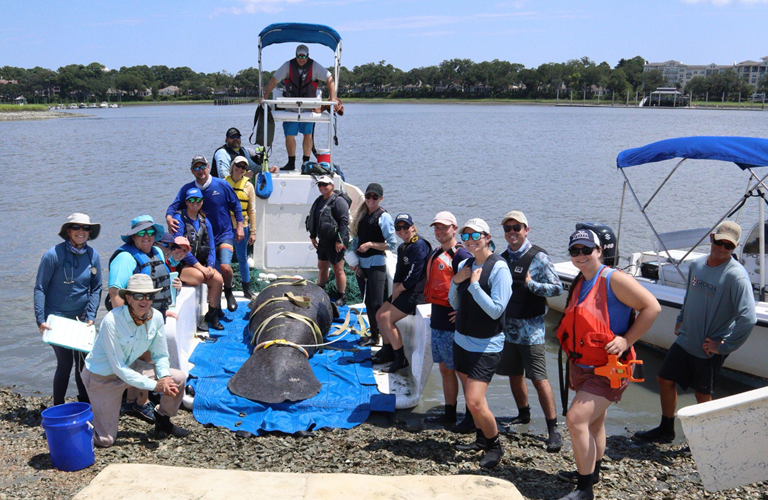
Last month, NCCOS helped conduct fieldwork to learn more about manatees found in coastal waters around Savannah, Georgia, and Hilton Head Island, South Carolina. The work is part of an ongoing, multi-institutional effort led by the Clearwater Marine Aquarium Research Institute to assess the health and habitat use of Florida manatees that migrate north in warm months.
Over the course of three days, the team spotted eight manatees in the region. Two adult male manatees were captured to receive comprehensive health assessments and satellite trackers before being released.
The number of manatee sightings outside Florida, as well as the distance of those sightings from Florida, has increased in recent decades. It remains unclear to researchers whether this is due to greater public participation in reporting sightings, a growing manatee population, loss of suitable habitat in Florida, or a combination of these factors.
For more than 40 years, the Florida manatee was listed as endangered under the federal Endangered Species Act. In 2017, manatee population gains prompted a downgrade of the listing to threatened, but the species still faces many hazards on the path to recovery, including boat strikes, harmful algal blooms, and loss of food sources. The mass mortality of manatees in Florida in 2021 and 2022 is attributed to starvation resulting from a large die-off of their primary food, seagrass.
The Clearwater Marine Aquarium Research Institute led this summer’s fieldwork, which included partners from NCCOS, the U.S. Fish and Wildlife Service, SeaWorld, the Georgia Aquarium, the University of Florida, Savannah State University, the Florida Fish and Wildlife Conservation Commission, and the Georgia Department of Natural Resources.
